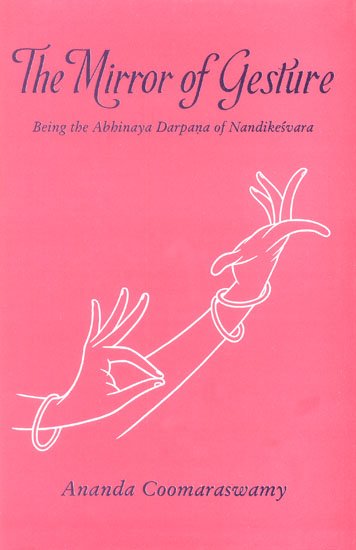Abhinaya-darpana (English)
by Ananda Coomaraswamy | 1917 | 16,981 words | ISBN-13: 9788121500210
The English translation of the Abhinaya-darpana (“the mirror of gesture”) by Nandikeshvara: an encyclopedic manual of the art of gesticulation. It belongs to a wide range of literature known as Natya-shastra: the ancient Indian art of dramatic performance, theatrics, dance and music. The Abhinaya Darpana is an abridgement of the Bharatarnava, a m...
Chapter 25 - Hands denoting Trees
Hands indicating Trees.—
Aśvattha (pipal), Alapadma hands, waving the fingers;
Kadalī, Mukula hands interlocked, extended, and the fingers waved;
Nārangi (orange), Padmakośa;
Vilva (wood-apple), the same;
Pnnnāga, Patāka and Catura;
Vata (banyan), Patāka;
Pūga (areca-nut), Padmakośa hands crossed;
Campaka, Lāṅgula hand downwards;
Khadira, Tāmracūḍa quite face downwards;
Śamī, Kartarī hands interlocked;
Aśoka, Patāka hands crossed, i. e. touching at the wrists and freely moving to and fro;
Sind-hrnāra, Mayura hands interlocked;
Āmalaka, the Samyama Nāyaka hand, i. e. the forefinger and second finger together in the middle of the palm, the rest extended;
Kuruvaka, Kartarī and Tripatāka hands;
Kapittha (elephant-apple), Alapadma hands are crossed;
Ketakī (screw-pine), Patāka and Catura hands crossed at the wrists;
Simśapa, Ardha-candra hands crossed;
Nimbasala, Śukatuṇḍa hands crossed;
Pārijāta, the Trijñāna hand, i. e. Patāka with both hands twisted upwards;
Tintrini, Lāṅgula hand;
Jambu, the Ardha-patāka hand;
Pālāsa, the Ardha-candra hand;
Rasāla (mango), the Tripatāka hand.
